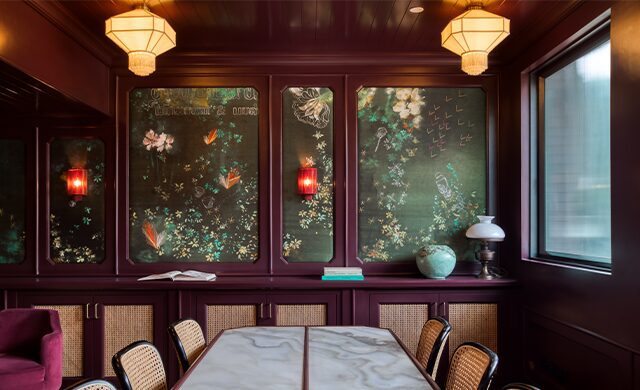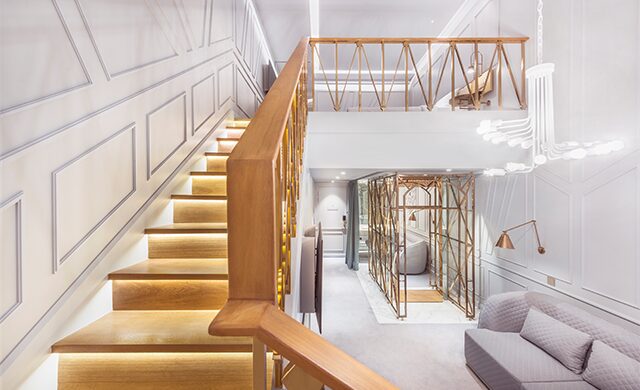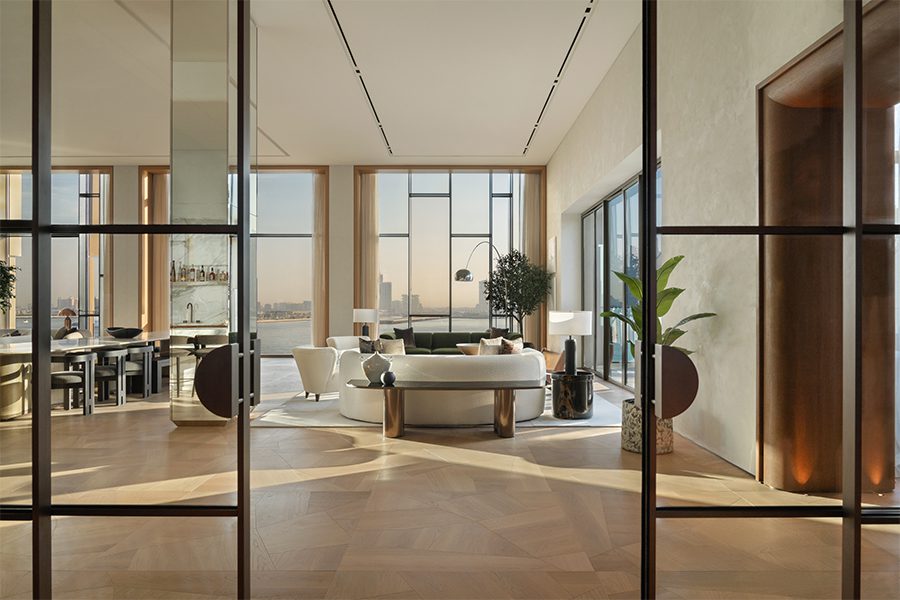With tourism in Malaysia facing fierce competition from neighboring countries, its hotel industry has been working to keep up. The number of hotels have reached an all-time high of 3,404 rooms in December. However, since the entry ban into Malaysia due to COVID-19, many hotels are struggling to survive, with the Malaysian Hotel Association predicting a loss of 60 percent of the country’s tourism business in 2020. Nevertheless, a handful of recent hotel openings signify the need for more distinct lifestyle offerings and a new breed of luxury hotels.
One&Only Desaru Coast

Lush landscaping establishes an immersive tropical atmosphere at the One&Only Desaru Coast
Among those is One&Only’s first property in Asia on the Desaru Coast where Kerry Hill Architects’ signature approach to tropical design takes centerstage. Located on Malaysia’s southeastern tip on the South China Sea, the beachside retreat features 42 junior suites, two two-bedroom grand suites, the four-bedroom Villa One, and 50 private homes.
To connect with nature, generous outdoor and indoor living spaces flaunt natural materials and hues that meld the resort with its surrounding rainforest. “We used locally sourced stone, handpicked for its durability, and yellow balau timber from sustainable sources to reflect the light tones of coastal sands and driftwood, as well as to emphasize the feeling of spaciousness and affinity with nature,” says Angelo Kriziotis, director at the Singapore- and Perth, Australia-based firm.
Because it’s on a slight slope of about 10 feet from forest to ocean, the guest suites overlook the planted roofs of the lower lawn suites “adding a layer of lushness to the design and promoting a sense of being enveloped by the existing landscape,” says Kriziotis. “The architecture doesn’t speak to an obvious Malaysian vernacular,” he adds. “It’s meant to evoke a feeling of a contemporary village much like a kampung.”
The RuMa Hotel and Residences

Local references done in a modern way define the reception area at the RuMa Hotel and Residences
“We wanted to create a hotel that would be instantly recognizable as being Malaysian in its DNA,” says Andy Hall, design director of Shanghai-based MQ Studio, about the 253-room RuMa. Situated in the heart of Kuala Lumpur, Hall’s concept was informed by local influences, resulting in a design driven by narrative and memory as it blurs the boundary between the contemporary and the historic. The holistic approach to the spatial design integrates local artisanal crafts to form a strong sense of context. At ATAS restaurant, for example, decorative elements found at the weekend markets on the outskirts of the capital city are done partially in gold as a way to link them together. Meanwhile, material finishes used throughout the hotel echo traditional elements implemented in a modern way, from local timber and natural wallpapers to classic hand-pressed tiles and batik-printed bowls.
The Chow Kit

The Library’s private dining room at Chow Kit recalls a decadent social parlor
The 113-room Chow Kit, an Ormond Hotel, pays homage to its energetic Kuala Lumpur neighborhood, marrying history with cosmopolitan modernity. Designed by Brooklyn, New York-based Studio Tack, the hotel, named for the famed street market nearby, takes cues from the area’s late-night revelry in the 1970s and ’80s. The interiors meld the grittiness and faded romance of bygone days with the decadent serenity of an upscale social parlor—the firm’s take on reimagined luxury for the modern-day traveler. At its heart, the Chow Kit Kitchen is a place of social and physical nourishment, modeled after local coffee shops called kopitiams. “The design is meant to be at once referential and current, creating an instantly classic environment,” says Studio Tack partner Jou-Yie Chou. “We did this by using enduring materials such as marble, oak, and brick, expressed in contemporary profiles and detailing.”
The Prestige Hotel

The lobby at the Prestige Hotel features a mirror-clad reception desk that appears to float
The handiwork of local architecture firm KL Wong and Singapore-based Ministry of Design (MOD), the 162-room Prestige Hotel references the legacy of its UNESCO World Heritage site in Georgetown and invents what MOD owner and design director Colin Seah refers to as a tropical Victorian language. “The hotel draws upon the cultural relevance of its colonial past and showcases the brilliant art of illusion etched in sophisticated architectural and design philosophies to deliver a distinctive experience,” Seah says. That magical layer, presented in subtle illusions and surprises like a mirror-clad reception desk seemingly balanced on reflective spheres and hidden doors that lead to bathrooms and pantries, is also a nod to the 2006 movie The Prestige, a story of two magicians set in the Victorian Age. “As a twist to the brand story, we introduced visual animation and notions of illusions to transform familiar heritage patterns,” he adds. The Glasshouse restaurant expands on the tropical Victorian aesthetic with a vision of an English garden conservatory. The design team deploys trickery here too, with mirrors creating the appearance of multiple rooms.

Suites at the Prestige Hotel take cues from performances like Houdini’s escape box
Photos courtesy of Kerry Hill Architects, Edward Hendricks, the Chow Kit, and the RuMa Hotel and Residences
This article originally appeared in HD’s June 2020 issue.



